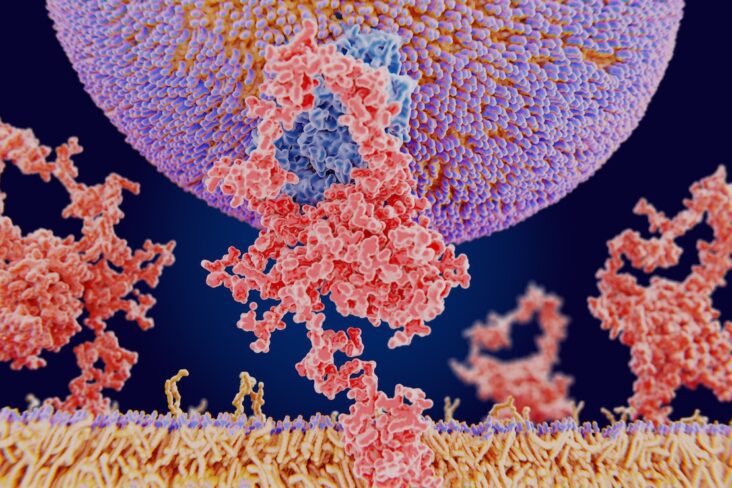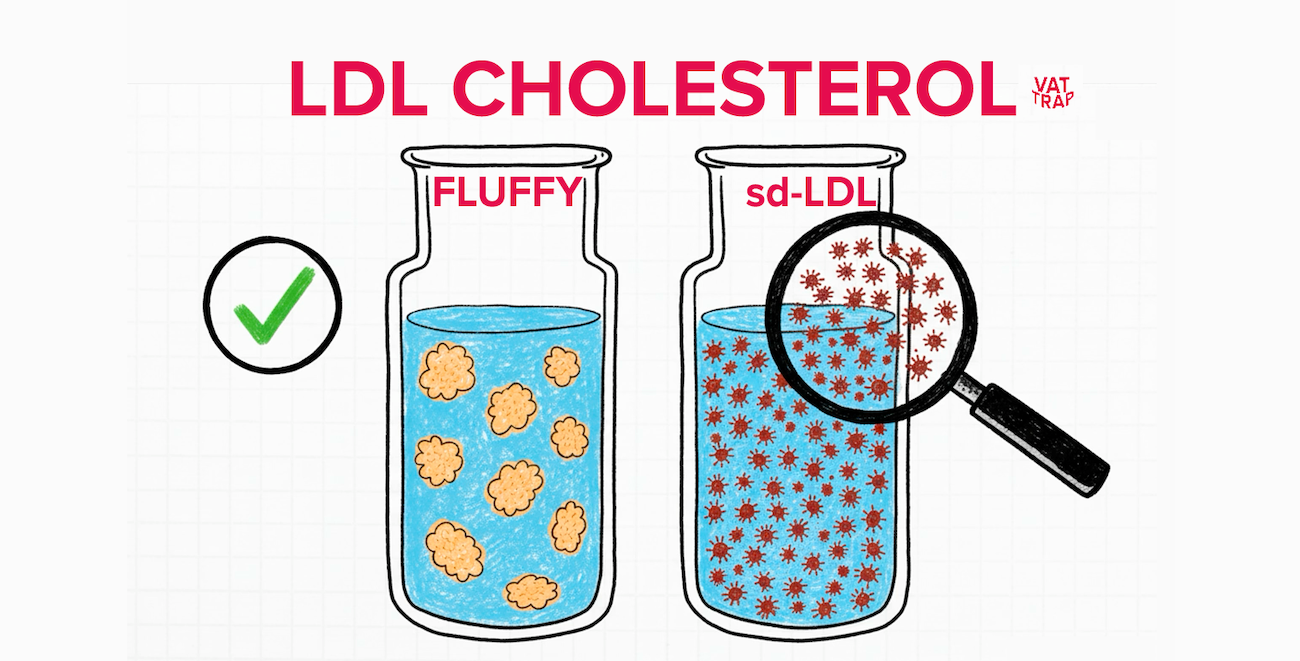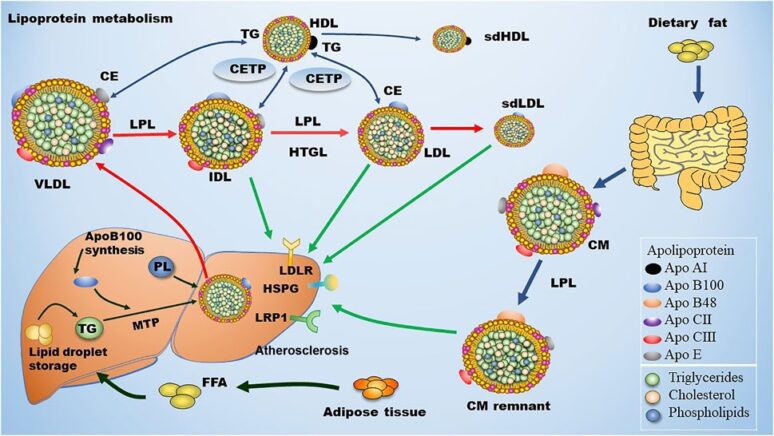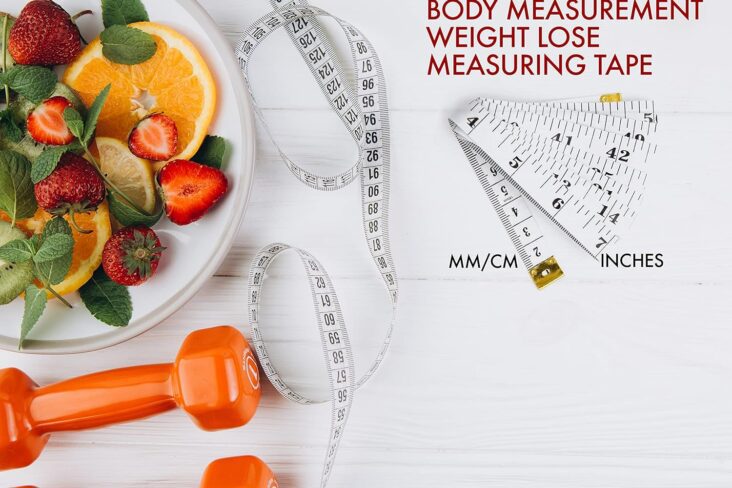
An article written by Dr Edward Leatham, Consultant Cardiologist
For busy people, or to tune in when on the move, Google Notebook AI audio podcast and an explainer slide show are available for this story beneath.
Tags: VAT, Metabolic Health, sdLDL CHD, search website using Tags to find related stories.
When people talk about “bad cholesterol,” they usually mean LDL — low-density lipoprotein.
For decades we’ve been told that lowering LDL-cholesterol reduces heart disease risk. That’s true — but it’s not the full story.
There’s a type of LDL particle that’s far more dangerous than the rest. It’s called small dense LDL, or sdLDL for short.
These tiny particles are slippery, sticky, and stealthy — and they may be quietly damaging arteries even when your cholesterol numbers look “normal.”
At the same time, another hidden player is at work deep inside the body: visceral fat, the fat that wraps around your organs.
Visceral fat doesn’t just sit there; it behaves like a chemical factory, sending out signals that change how your liver and blood vessels handle fats and sugars.
Together, sdLDL and visceral fat form a partnership that accelerates heart disease, often long before blood tests show anything wrong.
Let’s unpack what’s going on — and, most importantly, what you can do about it.
Not All LDL Is Created Equal
LDL is often called “bad cholesterol,” but LDL isn’t really cholesterol at all — it’s a particle that carries cholesterol through the bloodstream, rather like a delivery van.
We all have millions of these particles floating around. Some are large and light, others are small and dense.
- Large, fluffy LDL tends to bounce off artery walls and is cleared easily by the liver.
- Small dense LDL (sdLDL), on the other hand, is compact and heavy. It slips into the tiny cracks in blood-vessel walls, sticks to them, and stays there long enough to get damaged by oxidation — the same process that makes butter go rancid.
Once oxidised, sdLDL attracts immune cells that turn into “foam cells,” the building blocks of arterial plaque.
This is how atherosclerosis — the gradual build up on inflammatory narrowing and hardening of arteries — begins.
Why Small Dense LDL Is So Dangerous
Scientists have known for years that people with mostly sdLDL particles have a higher risk of heart attack and stroke than those with the larger kind — even if both groups have the same LDL-cholesterol level.
That’s because cholesterol level only measures how much cholesterol is inside the particles, not how many particles there are or what kind they are.
Here’s what makes sdLDL particularly harmful:
- They penetrate the artery wall more easily. Their small size allows them to squeeze through the inner lining of blood vessels.
- They linger longer in the bloodstream. The liver’s LDL receptors don’t recognise them efficiently, so they circulate for days rather than hours.
- They’re more likely to oxidise. Longer circulation time means more exposure to oxidative stress.
- They’re linked with high triglycerides and low HDL (good cholesterol). These often go hand-in-hand with insulin resistance and weight gain around the middle.
In short, sdLDL particles are like “spoiled delivery vans” that get lost, break down, and spill their cargo into the arterial wall — sparking inflammation and plaque formation.
Understanding How “Bad Cholesterol” Is Made and Processed in the Body
When we eat foods that contain fat, that fat is broken down in the gut and packaged into particles called chylomicrons.
These chylomicrons travel through the bloodstream to deliver fat (triglycerides) to our tissues for storage or energy.
Once much of that fat has been removed by an enzyme called lipoprotein lipase (LPL), what’s left is called a chylomicron remnant, which is taken up by the liver.
Inside the liver, new particles called very low-density lipoproteins (VLDL) are made. These are like delivery trucks that carry triglycerides from the liver into the bloodstream.
As VLDL particles circulate, enzymes (LPL and hepatic lipase) gradually strip away their triglycerides. As they lose fat, they become smaller and denser, turning first into intermediate-density lipoprotein (IDL) and finally into low-density lipoprotein (LDL) — the so-called “bad cholesterol.”
However, not all LDL particles are the same.
Some remain large and light, while others become small and dense (sdLDL).
These small dense LDL particles are the most dangerous because they can slip through the artery wall, get trapped, and become oxidised — a key step in forming atherosclerotic plaque.
A protein called CETP (cholesteryl ester transfer protein) can also swap fats and cholesterol between HDL (“good cholesterol”) and LDL, often producing more of the small dense, harmful forms of both LDL and HDL.
The body tries to clear LDL and sdLDL particles from the blood through receptors in the liver (such as LDL receptors), but small dense particles are less easily recognised and cleared. This means they stay in the bloodstream longer, where they can do more damage.
In short:
- Fat from food → chylomicrons → processed by LPL → remnants → go to liver
- Liver makes VLDL → converted to LDL → can become small dense LDL
- Small dense LDL is the most harmful form and plays a major role in artery damage and heart disease.
Where Small Dense LDL Comes From
 FIGURE 1. Metabolism of LDL. Dietary fat is degraded and then absorbed by intestinal cells for the assembly of chylomicron (CM), which is hydrolyzed by lipoprotein lipase (LPL) in circulation to produce chylomicron remnant (CMR). In the liver, apolipoprotein B (ApoB) 100 is critical for the generation of very low-density lipoprotein (VLDL). In blood, plasma VLDL is converted to intermediate low-density lipoprotein (IDL) and low-density lipoprotein (LDL) via hydrolysis of triglycerides (TGs) by LPL and hepatic lipase (HL). Of note, cholesteryl ester transfer protein (CETP) mediates the exchange of cholesterol ester (CE) and TG between high density lipoprotein (HDL) and Apo B-containing lipoprotein, leading to the production of small dense LDL (sdLDL) and small dense HDL (sdHDL), which are atherogenic factors. CMR, IDL, LDL, and sdLDL particles can be cleared by liver through LDL receptor (LDLR), LDLR-related protein 1 (LRP1), heparan sulfate proteoglycan (HSPG), and other potentially unknown receptors. MTP: microsomal triglyceride transfer protein.
FIGURE 1. Metabolism of LDL. Dietary fat is degraded and then absorbed by intestinal cells for the assembly of chylomicron (CM), which is hydrolyzed by lipoprotein lipase (LPL) in circulation to produce chylomicron remnant (CMR). In the liver, apolipoprotein B (ApoB) 100 is critical for the generation of very low-density lipoprotein (VLDL). In blood, plasma VLDL is converted to intermediate low-density lipoprotein (IDL) and low-density lipoprotein (LDL) via hydrolysis of triglycerides (TGs) by LPL and hepatic lipase (HL). Of note, cholesteryl ester transfer protein (CETP) mediates the exchange of cholesterol ester (CE) and TG between high density lipoprotein (HDL) and Apo B-containing lipoprotein, leading to the production of small dense LDL (sdLDL) and small dense HDL (sdHDL), which are atherogenic factors. CMR, IDL, LDL, and sdLDL particles can be cleared by liver through LDL receptor (LDLR), LDLR-related protein 1 (LRP1), heparan sulfate proteoglycan (HSPG), and other potentially unknown receptors. MTP: microsomal triglyceride transfer protein.
Acknowledgement
Figure and explanation from: Qiao Y-N, Zou Y-L, and Guo S-D (2022). Low-density lipoprotein particles in atherosclerosis. Frontiers in Physiology, 13:931931. https://doi.org/10.3389/fphys.2022.931931
© 2022 Qiao, Zou and Guo. This figure is used and modified under the terms of the Creative Commons Attribution License (CC BY 4.0), which permits unrestricted use, distribution, and reproduction in any medium, provided the original authors and source are credited.
Most sdLDL doesn’t start out small and dense. It’s made from larger particles called VLDL (very low-density lipoproteins) that the liver produces when it has too much fat to export.
Here’s the chain reaction:
- The liver makes VLDL to carry triglycerides (fat) into the bloodstream.
- Enzymes gradually remove triglycerides from VLDL, turning them into smaller particles — first intermediate-density lipoprotein (IDL), then sdLDL.
- These sdLDL particles hang around in the blood because they don’t bind well to the liver’s clearance receptors.
- The longer they circulate, the more likely they are to become oxidised and trigger plaque formation.
So what causes the liver to churn out excess VLDL in the first place?
That’s where visceral fat and insulin enter the story.
The Link Between Visceral Fat and sdLDL
Not all body fat behaves the same way.
Subcutaneous fat — the fat under your skin — is relatively harmless.
Visceral fat, however, is stored deep inside the abdomen, around organs such as the liver, pancreas and intestines.
Visceral fat drains directly into the portal vein, which carries blood straight to the liver. This means the liver is exposed to high local concentrations of insulin and fatty acids long before they show up in a blood test.
The result? The liver becomes overstimulated to produce more triglycerides and more VLDL particles.
As these VLDL particles are stripped of triglycerides in the circulation, they turn into — you guessed it — small dense LDL.
So the more visceral fat you have, the more likely you are to have sdLDL dominating your cholesterol profile.
This explains why some people with “normal” LDL levels still develop heart disease: the type of LDL matters more than the total amount.
Why You Might Not See It on a Blood Test
Standard cholesterol tests measure total LDL-C — the cholesterol content within all LDL particles — but not particle size or density.
Two people can have the same LDL-C result, but one may have mostly large, harmless LDL, while the other has mostly sdLDL.
Some laboratories can measure LDL subfractions using advanced methods such as nuclear magnetic resonance spectroscopy (NMR) or gradient gel electrophoresis, but these tests are expensive and not widely available.
Fortunately, there are clues that suggest sdLDL may be present:
- Fasting blood High triglycerides (above 1.7 mmol/L – may not be present until very advanced)
- Low HDL-C (below 1.0 mmol/L in men, 1.3 mmol/L in women, but a drift over years may be a sign)
- Waist-to-height ratio above 0.5 — meaning your waist is more than half your height
- Glucose spikes on a continuous glucose monitor (CGM) or after carbohydrate-rich meals in people with non diabetic hyperglycaemia or carbohydrate sensitive genotype.
Even without advanced testing, these simple indicators can highlight those at risk of sdLDL-driven heart disease.
For more on this see https://www.scvc.co.uk/metabolic-health/understanding-cholesterol-carrying-lipoproteins-beyond-good-and-bad-cholesterol/
Statins Help — But Only Partly
Statins are still the cornerstone of cholesterol management.
They lower LDL-C by increasing the liver’s ability to clear LDL particles from the bloodstream.
They do reduce sdLDL, but not always proportionally — because sdLDL represents only about 20 % of total LDL in most people.
Research shows that statins can reduce sdLDL by around 20–30 %, particularly at higher doses, and shift LDL particles towards a larger, less atherogenic form.¹⁻³
However, they don’t directly address the underlying cause — visceral fat and liver overproduction of VLDL.
That’s why people with a “VAT-driven” metabolic pattern may continue to have cardiovascular risk despite taking statins and reaching their target LDL-C.
Reducing visceral fat can amplify the benefits of statin therapy and sometimes allow lower doses to achieve the same effect.
Targeting the Root Cause: Reducing Visceral Fat
The good news is that visceral fat is reversible.
It responds quickly to lifestyle change — often faster than subcutaneous fat.
When visceral fat shrinks, the liver receives fewer fatty acids, produces less VLDL, and sdLDL levels fall naturally.
Here’s how to do it:
1. Track Your Waist and Weight Composition
A simple tape measure is more powerful than you think.
Aim for a waist-to-height ratio below 0.5 — meaning your waist should be less than half your height.
Body-composition scales or low-dose CT scans can also estimate visceral fat, but the tape measure is an excellent starting point.
2. Moderate Carbohydrate Intake
People with a carbohydrate-sensitive phenotype often experience sharp glucose excursions and insulin spikes after eating refined carbs.
Reducing sugar and processed starches (white bread, pasta, pastries) helps lower insulin, which in turn reduces liver fat and VLDL production.
3. Increase Protein
Protein has a high thermic effect and helps preserve muscle while losing fat.
It also reduces hunger and stabilises blood sugar — indirectly lowering insulin spikes that drive visceral fat storage.
4. Move Every Day
Resistance training and high-intensity intervals increase muscle mass, which acts as a “glucose sponge,” reducing post-meal glucose excursions.
Even brisk walking after meals can blunt glucose spikes.
5. Get Enough Sleep
Poor sleep raises cortisol, which increases appetite and promotes central fat gain.
Aim for 7–8 hours per night and keep a consistent sleep-wake rhythm.
6. Consider Modern Tools
If available, CGM sensors provide real-time feedback on glucose patterns.
GLP-1 receptor agonists, used under medical supervision, directly reduce visceral fat and improve lipid profiles — but lifestyle remains the foundation.
What This Means for You
If you’ve been told your cholesterol is “fine” but you carry weight around the middle, have borderline high triglycerides, or experience energy crashes after carbohydrate-heavy meals, it’s worth digging deeper.
You may be one of the many people whose risk comes not from how much LDL they have, but what kind of LDL it is. Reducing visceral fat is now recognised as one of the most powerful levers for improving long-term heart and metabolic health.
It lowers sdLDL formation, restores insulin sensitivity, improves blood pressure, and reduces inflammation — the full cardiometabolic package.
The Take-Home Message
- Small dense LDL (sdLDL) is the most harmful form of “bad cholesterol.”
- It forms when the liver overproduces VLDL — often driven by visceral fat and high insulin levels.
- Visceral fat sits deep around the organs and feeds directly into the liver, causing early metabolic disruption long before blood tests detect it.
- You can’t measure sdLDL easily, but clues such as high triglycerides, low HDL, and waist-to-height ratio above 0.5 often reveal its presence.
- Statins help by lowering LDL-C and sdLDL, but the biggest long-term benefit comes from reducing visceral fat through nutrition, exercise, and modern monitoring tools like CGM.
In other words, tackling the fat you can’t see may be the key to protecting the arteries you can’t feel — and unlocking the next generation of heart-disease prevention.
References
- Superko HR, Garrett B. Small Dense LDL: Scientific Background, Clinical Relevance, and Recent Evidence—Still a Risk Even with “Normal” LDL-C Levels. Biomedicines. 2022; 10(4): 829. https://pmc.ncbi.nlm.nih.gov/articles/PMC9025822/
- Krauss RM. Small Dense LDL Particles: Clinically Relevant? Curr Opin Lipidol. 2022; 33(3): 160–166. https://escholarship.org/uc/item/9xm7v937
- Hoogeveen RC et al. Small Dense LDL-Cholesterol Concentrations Predict Risk for Coronary Heart Disease: The ARIC Study. PLoS One. 2013; 8(3): e57043. https://pmc.ncbi.nlm.nih.gov/articles/PMC3999643/
- Chapman MJ et al. Low-Density Lipoproteins Cause Atherosclerotic Cardiovascular Disease. Eur Heart J. 2020; 41(24): 2313–2330. https://academic.oup.com/eurheartj/article/41/24/2313/5735221
- Sun J et al. Small Dense LDL-Cholesterol Is Associated with Metabolic Syndrome Independently of Central Obesity and Inflammation. Nutr Metab (Lond). 2019; 16: 46. https://nutritionandmetabolism.biomedcentral.com/articles/10.1186/s12986-019-0334-y
Qiao Y-N, Zou Y-L, Guo S-D. Low-density lipoprotein particles in atherosclerosis. Frontiers in Physiology. 2022;13:931931.
doi:10.3389/fphys.2022.931931 (Section: Lipid and Fatty Acid Research; Review Article, published 30 August 2022. Part of the Research Topic: “Lipid Metabolism and Human Diseases.”)
Technical papers: located in Dr Leatham’s “VAT Trap” Digital Companion and Resources
- Why So Many PCSK9 Mutations Exist — Evolution, Immunity, and Trade-Offs
- Bradford Hill’s Criteria for Causation Applied to LDL Cholesterol and Coronary Heart Disease
- A Bradford Hill Appraisal of Raised Visceral Adipose Tissue and Coronary Heart Disease:
Related posts
- Understanding Cholesterol-Carrying Lipoproteins — Beyond “Good” and “Bad” Cholesterol
- Cholesterol, LDL, and what we learnt from PCSK9 mutations in familial hypercholesterolaemia
- So what does determine your LDL (‘bad’) Cholesterol?
- LDL: the lower the better
- How to Lose Visceral Adipose Tissue (VAT) and Improve Metabolic Health: A Guide to Sustainable Weight Loss
- Visceral Fat, Mitochondria, and the Energy Trap: Why We Store Fat Where We Shouldn’t
- Why everyone is talking about VAT


 FIGURE 1. Metabolism of LDL. Dietary fat is degraded and then absorbed by intestinal cells for the assembly of chylomicron (CM), which is hydrolyzed by lipoprotein lipase (LPL) in circulation to produce chylomicron remnant (CMR). In the liver, apolipoprotein B (ApoB) 100 is critical for the generation of very low-density lipoprotein (VLDL). In blood, plasma VLDL is converted to intermediate low-density lipoprotein (IDL) and low-density lipoprotein (LDL) via hydrolysis of triglycerides (TGs) by LPL and hepatic lipase (HL). Of note, cholesteryl ester transfer protein (CETP) mediates the exchange of cholesterol ester (CE) and TG between high density lipoprotein (HDL) and Apo B-containing lipoprotein, leading to the production of small dense LDL (sdLDL) and small dense HDL (sdHDL), which are atherogenic factors. CMR, IDL, LDL, and sdLDL particles can be cleared by liver through LDL receptor (LDLR), LDLR-related protein 1 (LRP1), heparan sulfate proteoglycan (HSPG), and other potentially unknown receptors. MTP: microsomal triglyceride transfer protein.
FIGURE 1. Metabolism of LDL. Dietary fat is degraded and then absorbed by intestinal cells for the assembly of chylomicron (CM), which is hydrolyzed by lipoprotein lipase (LPL) in circulation to produce chylomicron remnant (CMR). In the liver, apolipoprotein B (ApoB) 100 is critical for the generation of very low-density lipoprotein (VLDL). In blood, plasma VLDL is converted to intermediate low-density lipoprotein (IDL) and low-density lipoprotein (LDL) via hydrolysis of triglycerides (TGs) by LPL and hepatic lipase (HL). Of note, cholesteryl ester transfer protein (CETP) mediates the exchange of cholesterol ester (CE) and TG between high density lipoprotein (HDL) and Apo B-containing lipoprotein, leading to the production of small dense LDL (sdLDL) and small dense HDL (sdHDL), which are atherogenic factors. CMR, IDL, LDL, and sdLDL particles can be cleared by liver through LDL receptor (LDLR), LDLR-related protein 1 (LRP1), heparan sulfate proteoglycan (HSPG), and other potentially unknown receptors. MTP: microsomal triglyceride transfer protein.

